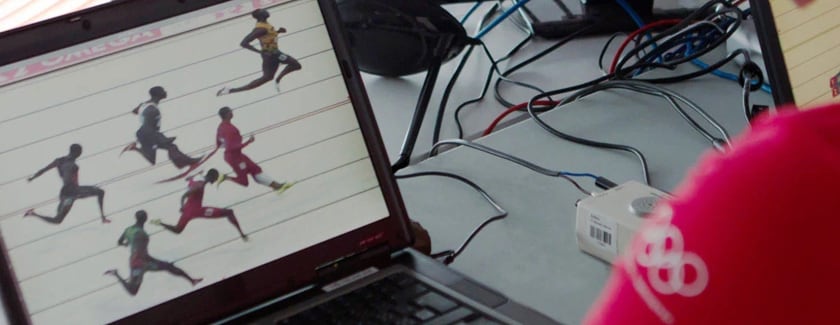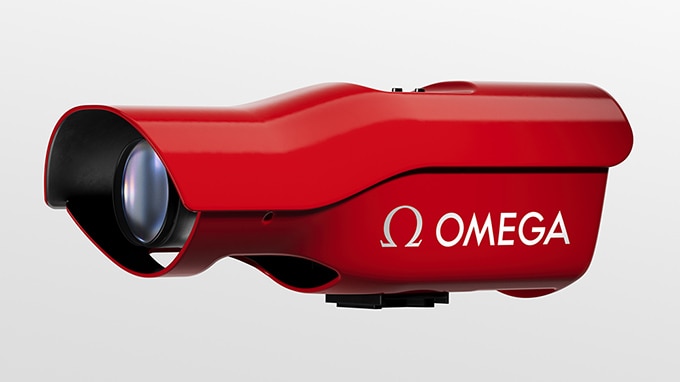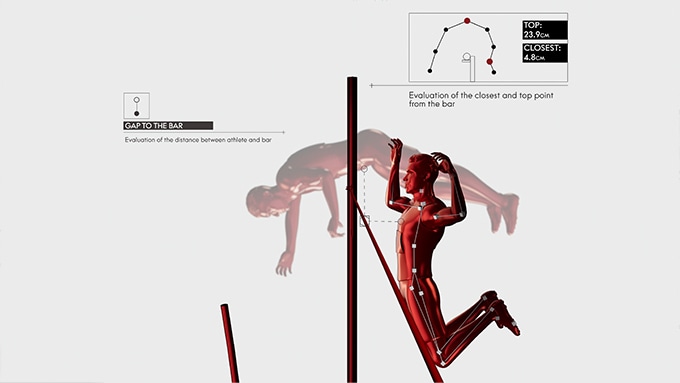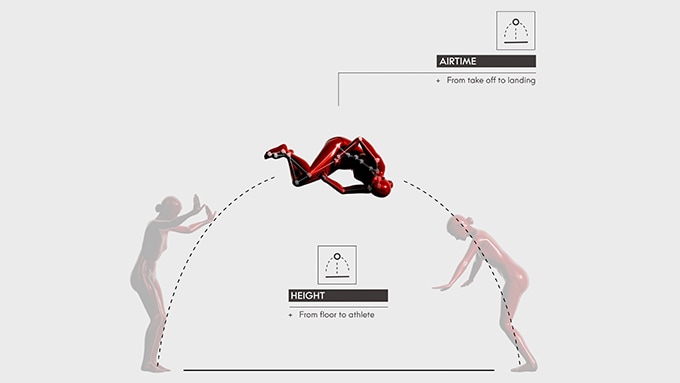Omega: New Technology for Paris 2024


Paris 2024 will highlight OMEGA’s next leap forward in the field of modern timekeeping. Raising the standards of precision and performance, the brand will not only measure the results that separate gold, silver, and bronze, but will also unleash a wave of in-depth data that shows exactly how each event is won or lost.
Scan ‘O’ Vision ULTIMATE

The margins have never been clearer. At Paris 2024, OMEGA is proudly introducing the next generation of its essential photofinish technology. Now enhanced with the highest resolution of any photofinish camera on the market, the Scan‘O’Vision ULTIMATE can capture up to 40,000 digital images per second on the finish line of races. This will ultimately make it faster for judges to decide the result and separate close finishes with maximum clarity. Dedicated colour sensors will also enable cleaner images, without pixel interference.
This improved version replaces the former Scan‘O’Vision MYRIA, which was able to record 10,000 digital images per second.
It’s the first time that the Scan‘O’Vision ULTIMATE will be seen at the Olympic Games. Pro-ducing a composite photo of every athlete crossing the line, it will determine the official results in athletics as well as track cycling.
Computer Vision Technology

Taking the next step in performance data, OMEGA will be tracking athletes and other objects throughout the events at Paris 2024 – in order to provide interesting and useful sets of metrics. Computer Vision uses a combination of single or multi-camera systems, each feeding Artificial Intelligence models that are specifically trained for each sport.
As in previous years, this live data will tell the comprehensive story of a whole event, revealing how it was won or lost, and the critical moments that led to an athlete’s final result. The infor-mation gathered by OMEGA will allow for in-depth sporting analysis, and no longer requires physical tags attached to the athletes.
The possibilities of this technology are endless. From enhanced viewing experiences for TV audiences, through to replay tools to support judgement calls, and even to generate official results. We are now seeing the Olympic Games in every detail.
This is how Computer Vision will be used at Paris 2024
-
in Beach Volleyball
Athletes are no longer required to wear sensors within their uniforms. Instead, all of OMEGA’s data will be captured by high-definition cameras that are installed around the field of play. This is a serious achievement in the world of sports and offers the first glimpse of how athlete performance will be measured in the future.
Not only can the system track the exact movement of the athletes, but also the ball as it flies through the air. This will show exactly how every match played out, including the distances each player covers, the speed of the players and the ball, the unique player tech-niques, including jump heights, and the type of shots, from smashes to blocks and spikes.

- in Diving
A system of cameras will track the divers – from the start to their jump, to their entry into the water. At that moment, a combination of AI and mathematical algorithms will repro-duce a 3D vision of the dive, with image data and calculated metrics (such as airtime and speed into the water) that will help judges to review the quality of the performance.
Along with body positions, the image data will also track the distance between the athlete and the board during a diving routine. This is known as the “safe gap”, and is the minimum distance required for each dive. If the safe gap isn’t maintained, the athlete may receive a deduction of points.
- in Tennis
By tracking the players, the rackets, and the ball in real time, Computer Vision will spe-cifically measure the reaction time of each returned serve. How quickly can the players return the ball? What was the exact position of their racket? This data will be used to find a correlation between the final winners and their reaction times after a serve.
- in Pole Vault
For the first time at the Olympic Games, the gap between the athlete and the bar will now be automatically measured. This is the most precise way ever to see how much space was left during a successful jump.
- in Gymnastics
During floor routines, OMEGA’s multi-camera system will track the athletes and pro-duce useful metrics for judges and TV enhancement.
For example, showing whether the athlete left the allowed area marked by lines, or showing the height and airtime of a jump. Thanks to AI-based skeleton tracking, even the angles of an athlete’s feet can be detected, providing in-depth analysis during a jump rotation.
Vionardo Next Generation Graphics Technology

The thrilling Olympic Games experience would not be the same without OMEGA’s in-depth and informative graphics. From live timing and scoring, through to final results and athlete information, these live and continuous on-screen displays are now a familiar and essential part of television viewing.
OMEGA’s role with TV graphics began at Innsbruck 1964, when the new “Omegascope” technology superimposed the times of athletes on the bottom of TV screens for the very first time. This moment introduced the concept of “real time” sports reporting and brought OMEGA’s precision to millions of viewers.
Now, 60 years later, the latest generation of OMEGA’s media graphics will arrive.
The Vionardo next generation graphics technology will show graphics in 4K UHD (ultra-high definition), producing extremely clear and captivating graphics in real time. It will offer TV graphics content in different languages according to the demand of rights-holding broadcasters from different geographical locations. Through an inter- active user interface, it can be operated by Olympic Broadcaster staff members or even by volunteers. Outside of the Olympic Games, the same technology can provide Tele- vision Graphics remotely, minimizing the infrastructure footprint at competition venues and improving sustainability measures.
At the Olympic Games Paris 2024, the graphics will be deployed by OMEGA for each sport at the respective competition venues, with some systems also installed at the IBC (International Broadcast Center) for specific remote productions. From there, the graphics will be provided to OBS (Olympic Broadcasting Services) who will send them to Media Rights-Holders around the world.